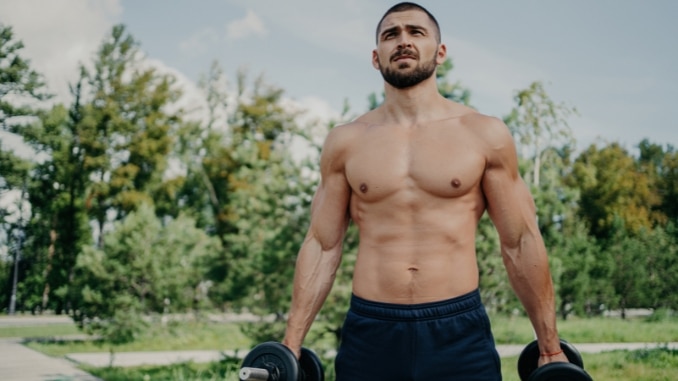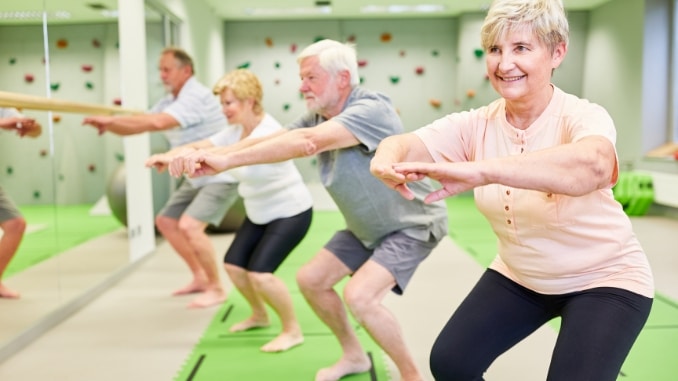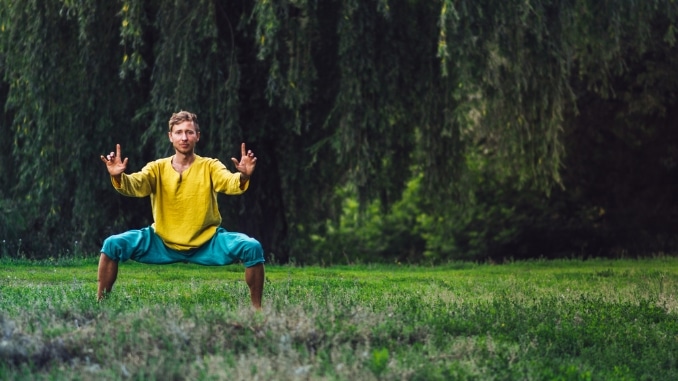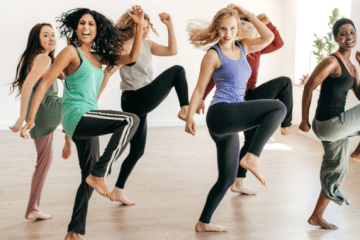Often underestimated, the horse stance in martial arts offers more than just physical strength; it's a gateway to inner balance and mental clarity. Beyond a mere exercise, this ancient practice yields incredible benefits for body and mind. Integration into fitness routines enhances understanding one's capabilities, strengthening core, legs, and overall stability. Yet, its advantages extend to mindfulness, fostering a deep sense of presence.
The horse stance exercise is key to resilience, control, and profound equilibrium. Whether for fitness or mental focus, it is an enduring tribute to the perfect balance between strength and serenity.
Understanding the Horse Stance
The horse stance, a foundational posture found in many martial arts forms, including Chinese martial arts like Kung Fu and karate, resembles a horse riding stance. Indian martial arts emphasize stability and strength. It involves standing with feet shoulder-width apart, knees bent, and thighs parallel to the ground.
This practice, deeply rooted in Eastern philosophies and influenced by Indian martial arts, transcends physical exercise and extends into mental and spiritual realms. Passed down through generations, it's a holistic approach to well-being, emphasizing the mind-body-nature connection, much like the principles upheld in various Indian martial arts traditions.
Employed for strength and stability in traditional martial arts and drawing inspiration from Indian martial arts, the horse stance is also a meditative and energy-cultivating tool in disciplines like qigong and tai chi. With core engagement and a focus on these shared principles, the horse stance becomes a transformative practice, enhancing physical and mental resilience while bridging the gap between Chinese and Indian martial arts philosophies.
The Physical Benefits of Practicing the Horse Stance
Regularly practicing the horse stance offers a range of physical benefits, going beyond conventional strength training exercises. This foundational stance, characterized by its isometric nature, demands prolonged muscle engagement, primarily targeting multiple muscle groups such as quadriceps, hamstrings, glutes, and core muscles. Here are some key advantages, presented with headers and bullets:
1. Muscular Strength and Endurance

-
- Quadriceps, Hamstrings, and Glutes: The isometric contraction in the horse stance enhances strength in key muscle groups, particularly the quadriceps, hamstrings, and glutes.
- Core Muscles: Sustained core engagement during the horse stance contributes to increased abdominal and lower back strength.
2. Stability and Posture
-
- Proper Alignment: The horse stance promotes proper body alignment, aiding in developing a stable and well-supported posture.
- Spinal Support: Strengthening the muscles that support the spine is a crucial byproduct, fostering improved spinal health and reducing the risk of injuries.
3. Body Awareness and Coordination

-
- Increased Muscle Tone: Consistent practice of the horse stance over time results in heightened muscle tone, achieving a more well-defined and sculpted body.
- Enhanced Coordination: Improved coordination is a natural outcome, benefiting individuals in various physical activities and movements.
4. Functional Strength for Daily Activities
-
- Mimicking Daily Movements: The horse stance closely mimics everyday movements and postures, facilitating functional strength development applicable to daily activities.
- Task Performance: Individuals can experience improved performance in tasks requiring lower body strength, such as lifting, squatting, and walking.
5. Muscular Endurance
-
- Prolonged Engagement: The sustained effort required to maintain the horse stance leads to improved muscular endurance.
- Reduced Fatigue: Enhanced endurance enables individuals to partake in physical activities for longer durations with reduced fatigue.
6. Comprehensive Fitness and Injury Prevention

-
- Well-Rounded Fitness: The physical benefits of practicing the horse stance contribute to a comprehensive approach to physical fitness, encompassing strength, stability, and endurance.
- Injury Prevention: Strengthening muscles and improving stability through the horse stance aids in injury prevention by creating a resilient and well-supported musculoskeletal system.
The Mental and Emotional Benefits of the Horse Stance
In addition to its evident physical advantages, the horse stance is a rich source of mental and emotional benefits that significantly contribute to overall well-being.
1. Mental Resilience and Focus

-
- Sustained Proper Posture Requirements: The prolonged nature of the horse stance necessitates mental focus, discipline, and perseverance, cultivating a robust sense of mental resilience and grit.
- Meditative State: Practitioners are encouraged to cultivate a meditative state of mind during the horse stance, fostering mindfulness, concentration, and heightened awareness of the present moment.
2. Cognitive Function and Stress Management
-
- Extended Benefits: The mental clarity and focus developed during the practice extend beyond the session, positively impacting daily life.
- Enhanced Cognitive Function: Improved cognitive function, sharper decision-making, and better stress management are byproducts of the mental aspects of the horse stance practice.
3. Emotional Resilience and Inner Strength
-
- Confronting Discomfort: Facing the discomfort and physical challenge of the horse stance becomes a powerful tool for developing emotional resilience.
- Cultivation of Attributes: Perseverance, determination, and self-discipline are cultivated, proving valuable in navigating life's obstacles and challenges.
4. Grounding and Stability
-
- Deep Sense of Grounding: The practice fosters a deep sense of grounding and stability, promoting emotional balance even in adversity.
- Resilience: Individuals become more resilient and better equipped to handle emotional ups and downs, contributing to overall emotional well-being.
5. Calm, Clarity, and Self-Confidence

-
- Emotional States: Engaging in the mental and emotional aspects of the horse stance can lead to a greater sense of calm and clarity.
- Increased Self-Confidence: The practice contributes to heightened self-confidence, positively influencing how individuals approach challenges in various aspects of life.
How to Properly Perform the Horse Stance
Performing the horse stance properly is essential to maximize its benefits and prevent injury.
- Proper Stance Technique: Stand with feet shoulder-width apart.
- Initiate Squat: Gradually lower into a squat, ensuring thighs parallel the ground.
- Foot and Knee Alignment: Turn feet outward with toes pointing forward; align knees with toes to prevent joint strain.
- Core Engagement: Engage core muscles for stability; maintain an upright posture with a straight back and lifted chest.
- Arm Positioning: Place arms in front with palms facing downward or on hips for added stability.
- Controlled Breathing: Maintain a steady breath; inhale deeply through the nose and gradually through your mouth.
- Weight Distribution: It is important to focus on even weight distribution between both legs. Ground through the feet for a strong foundation. This is essential for an effective exercise.
- Hold Position: Hold the stance for a challenging duration without compromising proper form or comfort.
- Gradual Duration Increase: As familiarity grows, gradually extend the hold duration to build strength and endurance.
- Listen to Body Signals: Pay attention to the body's signals; make adjustments for a safe and effective practice.
Incorporating the Horse Stance into Your Fitness Routine
Integrating the horse stance into your fitness routine can benefit your physical and mental well-being. Use it as a warm-up before a demanding exercise like running, weightlifting, or martial arts to activate lower body muscles and improve mobility. Incorporate it into strength training for a well-rounded regimen targeting key muscle groups. The horse stance can also enhance mindfulness practices like yoga and meditation, fostering mental focus and inner calm. Whether a standalone exercise or part of a holistic fitness routine, it offers versatility and impact to boost overall fitness and resilience.
Tips for Improving Your Horse Stance

Enhancing your proficiency in horse stance training can be achieved through:
- Consistent Practice and Form Attention: Enhance ability through regular, consistent practice.
- Pay mindful attention to form and technique.
- Proper Alignment and Muscle Engagement: Start by maintaining proper alignment during the horse stance. Engage necessary muscle groups throughout the hold.
- Gradual Progression: Gradually increase the duration of the horse stance. Prioritize quality over quantity for precise and controlled performance.
- Variations and Modifications: Incorporate variations and modifications to target specific muscle groups. Challenge different aspects of physical and mental endurance.
- Breathwork and Mindfulness: Enhance mental focus and relaxation with breathwork. Improve overall mind-body connection through mindfulness techniques.
- Approach with Curiosity and Patience: Deepen understanding by approaching the horse stance with curiosity. Practice patience and openness to unlock transformative potential.
- Guidance from Instructors: Seek advice from experienced instructors or practitioners. Gain valuable insights and feedback to refine technique.
- Dedication and Exploration: Approach the practice with commitment. Be willing to explore new possibilities for personal growth.
- Elevate Proficiency and Experience Impact: Elevate proficiency in the horse stance for a profound impact. Experience improvements in strength, balance, and overall well-being.
Variations of the Horse Stance for Different Fitness Levels
Adapting the horse stance to accommodate various fitness levels is key to creating an inclusive and personalized practice. Whether you're a beginner seeking accessibility or an advanced practitioner craving a challenge, modifying the horse stance can cater to individual needs.
For Beginners or Limited Mobility
-
- Adjust Squat Depth – Gradually increase or decrease the squat depth to match comfort and mobility levels.
- Alter Foot Angle – Experiment with the angle of the feet to find a stable position that suits individual flexibility.
- Use Supportive Props – Integrate props like a sturdy chair or wall for assistance and stability, aiding those new to the practice or dealing with physical limitations.
For Advanced Practitioners
-
- Incorporate Dynamic Movements – Explore dynamic variations, such as pulsing or shifting weight from side to side, to enhance muscular endurance and coordination.
- Experiment with Arm Positions – Try arm positions like overhead reaches or incorporate weights to intensify upper-body engagement while maintaining lower-body stability.
Conclusion
In conclusion, the horse stance is a timeless testament to the holistic fusion of strength and serenity, offering a pathway to unlocking physical, mental, and emotional resilience. By delving into the understanding, material benefits, mental and emotional advantages, proper technique, integration into fitness routines, tips for improvement, variations, cultural and historical significance, and expert advice on mastering the horse stance, individuals can harness its transformative power to cultivate a more profound sense of strength, balance, and well-being.
Whether practiced as a foundational posture in martial arts, a strength training component, or a mindfulness practice, the horse stance is critical to unlocking the untapped potential within the body and mind. Embrace the timeless wisdom of the horse stance and awaken the extraordinary benefits of strength, balance, and serenity in your journey toward holistic well-being.
If one exercise program could benefit your heart, improve your balance, strengthen your bones and muscles, and help you manage your weight, wouldn’t that be amazing? Well, look no further! Check out this Save Your Strength now!




